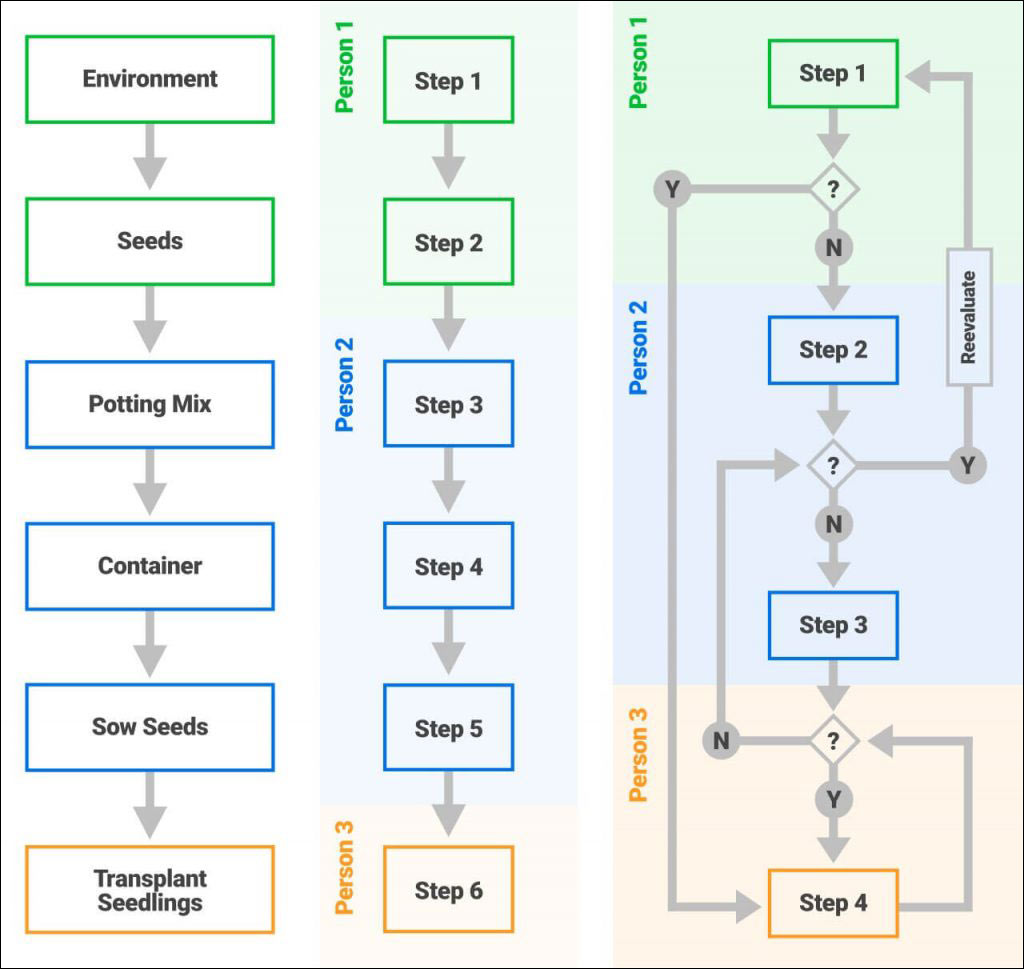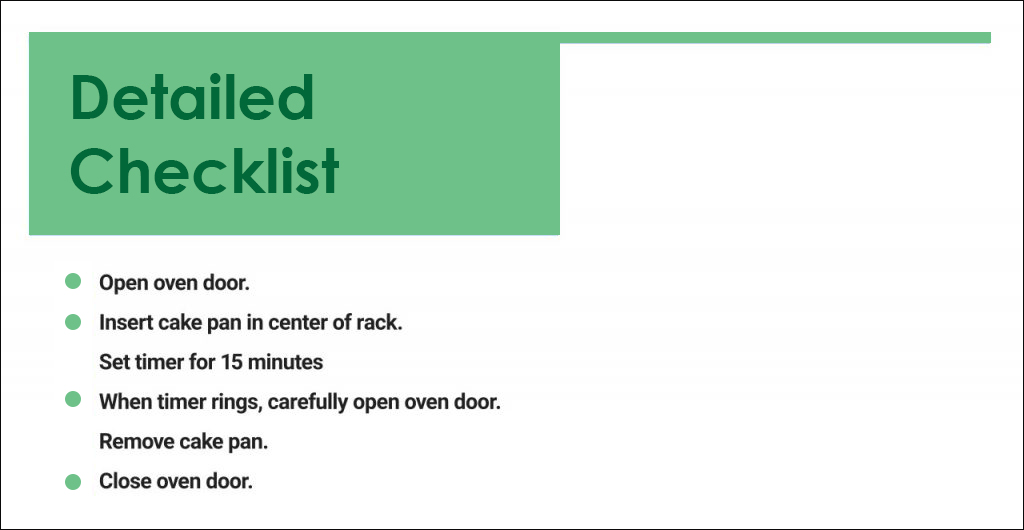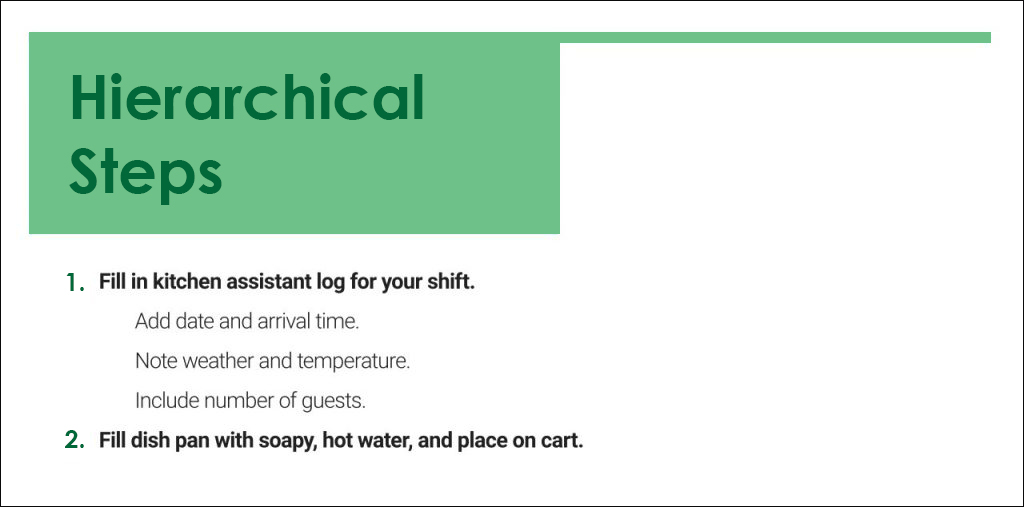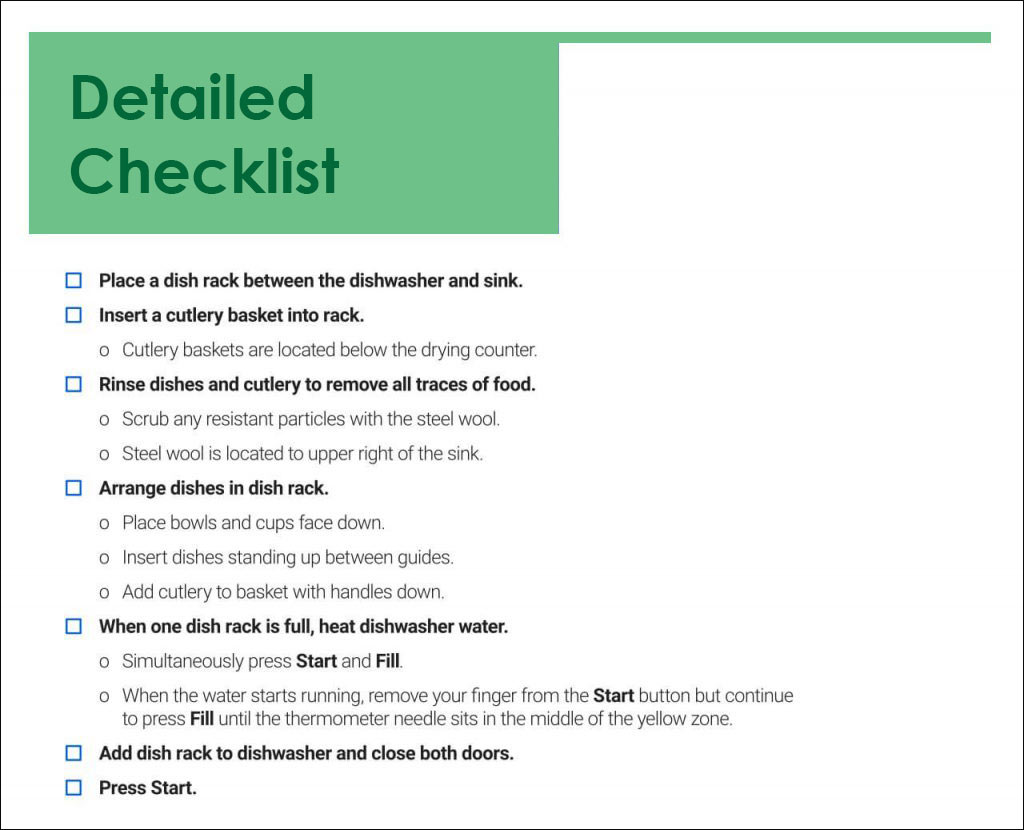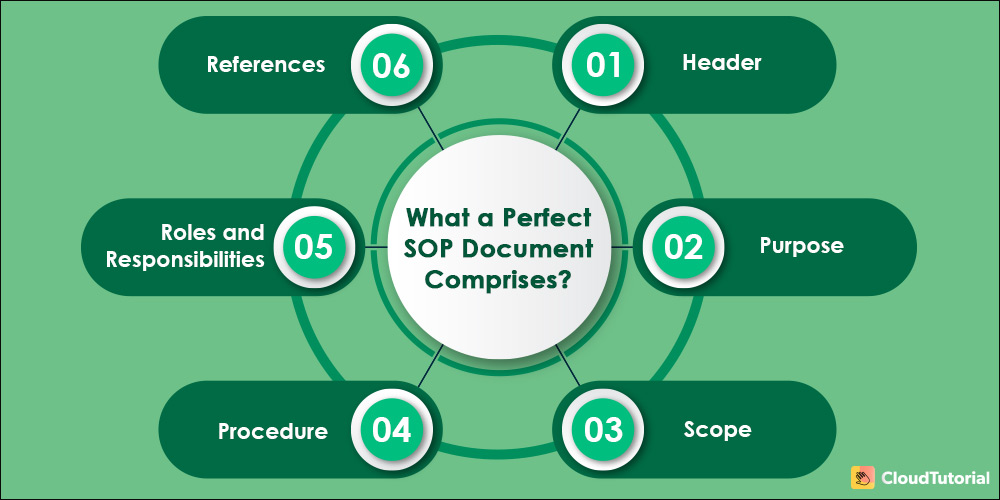For your company to function like a finely-tuned engine, every department must sail on the same boat at all times. For this, Standard Operating Procedure (SOP) in your quality management system must be incorporated.
Making sure your teams are functioning from a coordinated and formalized procedure not only upsurges productivity but also diminishes the risk of mistakes. If you anticipate that every employee must follow the same guidelines, then you should specify clearly what such guidelines are. The best method to do this is to document a set of instructions.
Let’s understand in-depth how to write standard operating procedures.
Table of Content
- What is a Standard Operating Procedure (SOP)?
- Importance of Standard Operating Procedures
- Reasons Why You Need Standard Operating Procedures
- Types of Standard Operating Procedures
- Write Standard Operating Procedure: The Complete Guide
- Free SOP Templates
- What a Perfect SOP Document Comprises?
- Benefits of Standard Operating Procedures
- FAQs
- Conclusion
What is a Standard Operating Procedure (SOP)?
Standard operating procedure (SOP) is an assemblage of step-by-step instructions formed by a company to assist their employees to execute routine tasks. Write SOPs to achieve quality output, uniformity of performance, and competence while decreasing miscommunication and failure to observe the stated guidelines.
SOPs are simply the documents that guide employees in performing the tasks effortlessly. Such documents are usually written by a manager to confirm quality and uniform results, while reducing ambiguity and miscommunication, if any.
SOPs are those detail-oriented documents that deliver complete guidelines as to how workforces within an organization must go about implementing certain business processes and tasks.
Importance of Standard Operating Procedures
Company procedures are not the end solution as they do not assure good results or excellent performance. SOPs ensure that you get organized quality processes and systems in one place, qualified teams, and encouraging enterprise culture. SOP, in its unadulterated type, supports the right individuals in the right ecosystem.
Moreover, if you are training your staff to perform the tasks they are hired for, then the question arises why get this extra task of documenting operating techniques? We recognize your dilemma, and have listed some of the reasons why each organization needs to form standard operating procedures (SOP):

Creating Well-Defined Procedures is Burning Need?
CloudTutorial provides a wide range of templates that lets you create and share unlimited articles on well-defined procedures!
Confirms Standards Are Achieved
Incorporating standard operating procedures ensures that the industry’s compliance standards are practiced and met accurately. Such SOPs put business processes in apt places so that your employees can comply with relevant policies, regulations, and laws, and evade any type of risk or litigation.
Ensures Safety of Team
SOPs validate that your employees execute all activities and tasks in a stable yet safe method. If every person is performing a task in their way, it not only gets disorganized but can also end in difficulties. This places the commerce in a rough situation and can unwrap itself for liabilities and lawsuits.
Saves Time
Having SOP documents in the right places helps any manager measure employee performance constructed on the guidelines supplied by them. Without appropriate work principles, comprehending the performance becomes a subject of personal belief, which is way far from being the correct method to evaluate the hard work of your employees.
Improves Accountability
Having SOP documents in the right places helps any manager measure employee performance constructed on the guidelines supplied by them. Without appropriate work principles, comprehending the performance becomes a subject of personal belief, which is way far from being the correct method to evaluate the hard work of your employees.
Preserves Organizational Knowledge
If your employees can execute all the necessary tasks with simplicity, constantly, and without any external documentation or aid, you still require to form SOP documents. This is for the reason that your relevant employees might move on to other enterprises, get promoted, go on a vacation, or retire, taking their skill, expertise, and organizational learning with them. Recording SOPs allows you to maintain organizational knowledge so that the knowledge does not leave the firm if any employee does.
Delivers Guidance
SOPs for your employees guide them in their work expedition to do astonishing work. These SOPs act as a map that new or old employees can abide by and anticipate the desired outcome, every time.
Improved Communication
Communication is very essential in business. SOPs make your executive’s job stress-free as they do not have to communicate the procedures and policies to each employee separately. The teams too, do not have to go to their co-workers or managers and ask for procedures in case they fail to recall as they can rapidly go through SOP documents and perform their work.
On-boarding, Training, And Development
Research shown by The American Society for Training and Development (ASTD) discovered that organizations that present wide-ranging training have 218% advanced income per worker than those with less widespread training. If you have defined SOP documents, it becomes much easier to onboard, train, and develop new employees and this, in turn, saves a lot of effort and time.
Offers Uniformity
The Standard operating procedures defined give uniformity of complete processes and make sure of a smooth workflow. All the employees have a single document to go through which will make them know precisely what requires to be done and how to execute the tasks. This indicates a reliable performance with fewer possessions wasted.
Types of Standard Operating Procedures
While some organizations are free to build their in-house SOP templates in a set-up that proves to be the best for their employees, most of the organizations select one from the following types:
Flowchart
Flowcharts work to be the best for illustrating SOPs when manifold consequences are possible at definite points during the procedure. In these cases, the result of one stage will influence how the employees will be required to approach every subsequent step.
Step-by-Step List
In a few cases, it may be adequate to form a bulleted or a simple numbered list of stages to incorporate when carrying out a procedure. This type of SOP must be employed only when the procedure in question is direct and in the majority of conditions can be finished without any delay or failure.
Procedures in which a step-by-step type is likely adequate contain:
- Digital login arrangements
- Set-up and clean-up instructions
- Detailed instructions for safe and proper use of equipment
Hierarchical List
If your processes are more multifaceted and require additional information, you can make hierarchical bullet lists or checklists. If you are incapable of elucidating a job in a particular step and at a given time and do not want to form SOP lengthy, supplementing it with hierarchical stages can be valuable.
Nevertheless, hierarchical SOP delivers additional particulars within every phase as deemed essential. While a step-by-step SOP would list stages 1, 2, 3, and so on, a hierarchical SOP may comprise stages 1a, 1b; 2a, 2b, 2c; 3a, 3b, and so forth.
The hierarchical type SOP is utilized when more instructions may be required to finish a given task sufficiently. For example, if Step 1 states the team members to log in, Step 1a may state persons to insert their username, and Step 1b may state them to insert their PIN.
Checklist
A checklist or a simple to-do list is one of the easiest approaches to writing any standard operating procedure document. Such a checklist can be printed out and handed over to employees or can be formed on an online note-taking application.
This type of SOP is the simplest way to make a procedure as you can form a header, the procedure you are making guidelines for, and add applicable checklist things that your employees require to follow to complete an allotted task.

Creating Well-Defined Procedures is Burning Need?
CloudTutorial provides a wide range of templates that lets you create and share unlimited articles on well-defined procedures!
Write Standard Operating Procedure: The Complete Guide

Now that you have understood what a standard operating procedure is and why your organization requires you to form one, it is time to create one. SOPs need a ton of planning and effort before you can start to document the processes. Below are the detailed steps you require to follow to form vigorous standard operating procedures:
Step 1: Produce a List of Processes
The major thing you ought to do with the purpose of writing standard operating procedure documents is to search which processes, workflows, or tasks you require. Conduct an examination or request your employees to fill a form describing what errands they perform daily. This will create the foundation of your list for SOP documents. Once you have collected this list, you can assess it with other executives and look for recurrences.
Step 2: Begin With ‘Why’
If your list is ready, it is time to jot down your purposes. Having a lucid answer to why you are making SOP must be your prime priority. Asking queries like, ‘How will SOP process flow impact the result?’ or ‘How will such a document aid the entire team?’ are some great preliminary points.
For a more descriptive methodology, classify the challenges or pain points your workforce faces in their routine and generate an SOP around it. This renders you a concrete ‘why’ to endure all that diligence of crafting an SOP and also develops the team’s buy-in in the entire procedure. Informing SMART goals for SOP initiatives, you will be able to cultivate the best business practices.

Step 3: Finalize the Format
Probabilities are that your business already has SOP documents transcribed for the past processes. You can mention these documents as templates and monitor the existing SOP. You can choose whether you need to open the list of specific steps, create workflow diagrams, a checklist, or a blend of the whole thing.
Step 4: Recognize Your Audience
Identifying your audience is the key to generating a remarkable SOP document. Get answers for the following queries to get a notion about your audience:
- What is the size of the audience?
- Are they new staff?
- Does an SOP previously exist?
- What knowledge do they possess?
The more data you get on your audience, the better you can recognize their viewpoints and craft an SOP that will be pertinent to them.
Step 5: Collaborate With Your Team
The Standard Operating Procedures are transcribed keeping in mind the end-users, that is, the employees. Having a team of employees collaborate in this procedure is an added advantage.
You cannot truly comprehend their challenges and pain points unless you converse with your employees and request their authentic suggestions and feedback. We recommend utilizing software like CloudTutorial to carry your whole team inside a mutual document and co-operate efficiently.
Step 6: Get Down to Writing
After you had a word with your teams and got enough data to begin, straightaway move to the document editor and keep adding the essential notes. You ought to follow the 5 C’s rule which states that an SOP has to be:
- Complete
- Concise
- Courteous
- Correct
- Clear
Once you have created this document, you can discuss it with your management and workers and ask for their inputs and feedback. Now, you can also stipulate who would be accountable for appraising and preserving these SOPs and when you would be having a periodic examination to draw more engagement.
Step 7: Create It Interactively
While some of you think that SOP documents are boring and text-heavy, they essentially do not have to be. Add screen recordings, screenshots, images, videos, flow charts, or anything applicable to the stage being spoken about.
Multi-media like these can assist you to make the SOP popular by supplying some visual aids to otherwise flat phases. Writing standard operating procedures in an interactive way will enhance the engagement level as your employees are certainly going to consider them more beneficial and even amusing.
Step 8: Dispersal
After you have prepared the SOPs, you have arrived at the most crucial part of the procedure – dispersing them to your group of employees. It is vital to discover an abode to stock all the standard operating procedures (SOP) and the rest of the training materials in a single place for your employees to access whenever they require.
You can store company assets like images, PDFs, and videos in your content library. You can rapidly generate a workspace, invite your teams, and segment SOPs in a safe and robust environment.
Step 9: Implement and Revisit
While various enterprises view generating SOP as a one-time procedure, which is barely the case. As the workflows and processes are often altering and evolving in the expectations of creating them well-organized, these operating procedures speedily become obsolete.
This is the reason why SOPs must be transformed into such documents that get reviewed occasionally. The ideal time to revisit SOP is after every six months so that these documents do not become out of sync with the workflow or procedures they are defining.
Free SOP Templates and Challenges to Creating an SOP
For companies that aim that particular activities must follow a stringent set of steps, an SOP template serves this purpose. The below-mentioned free standard operating procedure templates will help you ensure that consistency and desired standards are maintained:
Challenges of Creating Standard Operating Procedures
Most organizations stock up their SOPs in Word docs or binders, without any system. And that is the problem here! Documents get lost, SOPs get outdated, and procedures are not followed. Transmitting SOPs to an online knowledge base solves such issues. Despite several benefits of building SOPs within your company, below are certain challenges that you have to face:
Difficulties with Visibility, Centralization, and Accessibility
After SOPs have been formed, you need to confirm that all shareholders are able to engage and access the said documents whenever required. Without its visibility and accessibility, it can be quite easy for SOP to fail. And this will make team members go back to the old methods of operations. Thus, the purpose of developing SOPs gets defeated.
Forming Incomplete Groups
The formation of SOPs requires everyone to put in their best. Fundamentally, if only some shareholders are engaged, you will observe that your SOPs are not up to the mark.
That being said, the procedure of forming an SOP requires to include all shareholders every single time. This will make sure that the practices being built are made in the favor of the company.
Lack of Maintenance
It must be noted that what serves best, for now, would not be the same always. Improvements in personnel changes, technology, and other such factors may need your team members to reassess previously formed SOP as time passes by. If your team follows obsolete SOPs in any manner and continues to follow them, your operations and its tasks will go all in vain!
Absence of Management
Your employees must be prepared and trained properly. This states that they should have access to the resources and equipment needed to finish off all the necessary tasks described in the SOP. Also, they must know how to effectively utilize such resources. Your team would not be able to work as per SOP if such an absence of management prevails.
What a Perfect SOP Document Comprises?
The subsequent structural fundamentals are usually found in most of the standard operating procedures:
- Purpose: Define the objectives and goals of writing standard operating procedure documents and how it will render an advantage to the users and the whole organization.
- Title page: Start your SOPs with the title of process, date of creation or revision, the department or employees or team the SOPs applies to, unique SOPs identification number, and lastly the name and signatures of the team members involved in forming such an SOP template.
- Scope: The project scope designates the limit of the SOP template and aids the reader to comprehend the set boundaries of such an SOP. It noticeably describes what the document is all about and what it tends to accomplish.
- Table of contents: A table of contents aids in summarizing the document construction and becomes a guide for any reader to rapidly jump to the sections that are relevant to him or her. It is particularly beneficial if the SOP template is large.
- Roles and responsibilities: Classify key managers and employees who have to abide by such SOPs and what accountabilities they would get. This aids evade confusion and keeps everybody responsible for their activities.
- Glossary: It is extremely helpful to comprise abbreviations, acronyms, or words you may have utilized in the SOP template that may not be much familiar to your desired audience.
- health and Safety warnings: Your SOPs must have a distinct segment defining the things your teams are required to avoid and execute the jobs in a safe setting. This not only guards your teams against possible hazards but also keeps your organization away from any unwelcome liabilities.
- Processes: This may constitute the majority of the SOP document as this segment will define the step-by-step clarifications of how to accomplish routine tasks and any other additional knowledge required to finish the task.
- Revision history: You may add a revision history to make sure that your users are reading the latest SOPs.
- Approval signatures: If your business needs a sanctioning officer to sign on an SOP, do not forget to get it permitted by them before distributing it with your users.
- Supporting documents: Comprise a list of reference guides or associated training materials to the SOPs.
Benefits of Standard Operating Procedures
Generating and confirming SOPs can necessitate a noteworthy investment of funds. You need labor, time, research, data collection, and other such resources to form robust types of SOP.
Even if your procedure has been inscribed and implemented, it is significant to evaluate your procedures and their consequences periodically to make modifications that can enhance team efficiency. Below are some of the benefits of Standard Operating Procedures that your organization will relish:
Standardization
An SOP creation tool is all about consistency and standardization. By outlining measures to execute an explicit routine job, you are standardizing it. Such a job must be executed in the same manner throughout your organization and across all the departments.
It not only saves your employees from forming their processes over and over again for identical tasks across your company, but will also make the procedures streamlined, increase consistency, and will permit the management to make some informed business choices.
Want to Create SOPs in The Easiest Possible Way?
CloudTutorial platform aids you to create and share any type of SOPs in your knowledge base for your teams to work.
Efficiency
Another reason why you must develop SOPs for your organization is to increase efficiency. SOPs make your staff predictable, measurable, and efficient. When your teams do not have to devote the energy to contemplate how to perform a task, they can focus all their energies on accomplishing the tasks allotted.
Once your squad finishes similar processes constantly, you can begin to enhance the processes. Possibly some of the steps are redundant and do not offer any additional worth. On the other hand, you may learn a frequent mistake or error that can be prohibited by adding a particular step to answer such issues.
In this way, there will be fewer unplanned shutdowns, equipment failures, and time wasted when you get SOP well-defined for each process, task, machinery, and equipment.
Safety
As per the International Labour Organization, it is projected that 2.3 employees all across the globe are involved in job-related safety and health concerns causing around 6000 deaths daily. Most of such damages can be stopped by including safety measures in the workflows. Employee health and safety at the workstation is a severe concern that can be managed with proper SOPs.
Whether you are required to describe the safest manner to shut down harmful equipment or remind staff to wear shielding gear, such additional reminders can aid avert misfortunes at the workplace. This ultimately saves your organization from fines, lawsuits, and penalties. After you have mentioned all the safety concerns, your teams are trained, and you are following the government law, things are bound to move effortlessly.
Accountability
Many employees try to escape responsibilities and such a lack of accountability charges the businesses much money. An SOP document can help resolve the matter of accountability and responsibility. If step-by-step procedures are defined in SOP, in conjunction with who is to perform, there are fewer chances for errors.
If a specific task is not finished correctly, and the SOP was not followed, the organization can take suitable action to avoid it from recurring. SOP increases responsibility and develops accountability throughout the company.
FAQsConclusionStandard Operating Procedure (SOP) is a document that defines the frequently repeated business operations pertinent to the quality of the examination. The purpose of SOP is to perform the processes appropriately and constantly in the same method. An SOP must be accessible at the place where the work is to be executed.A well-written SOP must briefly define the objective of the business process or work, containing the regulatory standards or information that are suitable to the SOP procedure, as well as the scope to specify what is enclosed.The benefits of the standard operating procedure documentation are training-related SOP aid, standardize training and orientation, decrease employee training time, enhance productivity, lessen errors, create a chain of command, meet legal necessities, transfer work effortlessly, and preserve uniformity across your company.In this blog, we have seen how to write standard operating procedures that would help your teams understand how to perform every task efficiently. Contact CloudTutorial to have a centralized internal knowledge base that plays a vital role in the implementation of SOP.
Your executives can trace SOP development in real-time and see how their employees are carrying out all their tasks as per SOPs. You can improve communication and accountability
easily at every organizational level intended to take your fabricated SOPs to the next level.
Try it out before you decide.
Create a test article NOW!
Using this tool, all you have to do is add your first test article and see how it looks. Now, you don’t have to sign-up or login into CloudTutorial software just to check how your first article appears.

